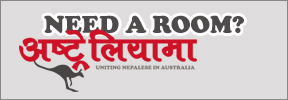Nexus between economic crisis and reforms
Aug 27, 2020 under Thoughts & Blogs 77
In economics and political sciences, a large body of literature is devoted to understanding the relationship between economic crisis and reforms. It has been well documented that a period of reforms generally follows a period of crisis. Such a phenomenon has been appropriately termed as the “crisis hypothesisâ€. Reforms here can mean a variety of things depending upon the situation and specific country characteristics, but in more general terms it refers to open access to trade, reduction in barriers to entry and greater participation of the private sector.
From a theoretical perspective, crises induce reforms because the need for reforms is greatly felt after a crisis has occurred. The required reforms only become an issue when the current policy fails to accommodate economic growth; crises in these instances simply mean an extreme case of policy failure. More essentially, crises also pose an opportunity for reshuffling the power of interest groups, paving the way for reforms.
In majority literature, a crisis is often quoted as a significant economic deterioration. There is, however, very little discourse with regards to the parameters of the significant economic deterioration, a flaw that has perhaps made the crisis hypothesis one of a tautological nature, i.e., one that cannot be falsified, for if reforms have not happened it can be easily said that a crisis has not occurred.
The recent situation we find ourselves in can be linked to the crisis hypothesis, for the restrictions currently imposed as a means to reduce the effects of the virus will surely have economic repercussions. The question, therefore, is whether such repercussions will be severe and significant enough to induce reforms.
In fact, many have been quick to point out the opportunities that exist in evaluating the status quo and initiating reforms. Indeed, the situation does provide us an opportunity to evaluate the existent cases of policy failure; however, the initiation of reforms is a different matter altogether. Whether the reforms required will be pursued or not will ultimately depend upon the perception for the need for such reforms as a result of the significant economic deterioration.
Although significant economic deterioration is a term with no well defined parameters, there do exist some historical evidences with regards to what form of crises can be termed as significant economic deterioration. The seminal work of Drazen and Easterly is perhaps the most influential in this regard. They find co-relation between high periods of inflation and black market premia and episodes of reforms that follow. In their own words, for extreme values of inflation and black market premia, the crisis hypothesis holds true. Extreme values here mean an average rate of inflation of 23 per cent and a black market premia of more than 69 percent.
Readily available data regarding inflation projection in Nepal suggest that the rate of inflation will average around seven to eight percentage till 2021. Although food-price inflation has increased as a result of the pandemic, overall inflation is forecast to remain steady as decline in non-food price inflation is expected to offset food-price inflation. The premia is calculated based on the difference between the actual exchange rate of the dollar and the exchange rate of the dollar in the black market. Data to this extent pertinent to the black market premia are not available readily. However so, inference of low black market premia can be drawn from the relatively low number of restrictions (with regards to the private sector) in Nepal as compared to episodes of high black market premia in African nations. Likewise, the availability of adequate exchange facilities and mechanisms to curb the existence of black markets for consumer goods itself can be a factor from which such inference can be made.
Based on historical evidence that shed light on some key parameters, it can be stated that the current pandemic-driven economic crisis is not significant enough to induce reforms. While the crisis itself has provided us with the unique opportunity to study and validate cases of policy failure, the policy failure is nowhere extreme enough to induce a realisation for the need of major policy changes. Whereas a greater threat of de-globalisation and state-led capitalism exists world-wide including in Nepal, an equally important threat is perhaps the continuation of the current status quo, as very little evidence supporting crisis-driven reforms is found.
Perhaps the continuation of cases of policy failure could also be significant enough to result in a political uprising, given Nepal’s own experience with previous uprisings resulting from periods of failures. Interestingly, however, previous episodes of uprisings have rarely led to correction of policy failures, specifically those that relate to private sector development (civil and political freedom, on the other hand, have relatively improved after each successive uprising).
Additionally, uprisings in the past have also stagnated growth for a period following the end of such revolt. On the bright side, recovery has also been moderately quick. The question, however, is whether we can afford an uprising or afford to continue with the status quo itself, a question that will require determining the trade-offs that exist in both instances.
KC is a researcher at Samriddhi Foundation, an independent research and educational public policy institute based in Kathmandu. yatindra@samriddhi.org.Â


